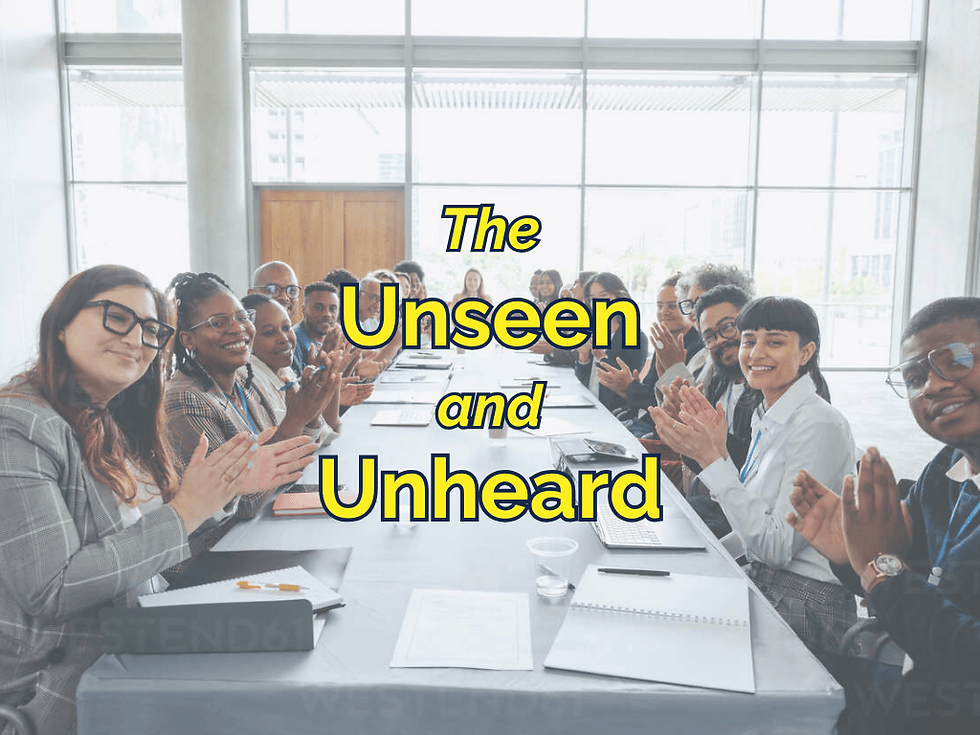How One State Communicates Climate Variability (without saying climate change)
- JD Solomon

- Oct 5, 2022
- 2 min read

The term climate change conjures pollical passions that make it nearly impossible to discuss or mitigate the issues that the public cares about. In South Carolina, the approach focuses on planning and coordinating statewide resilience, long-term recovery, and hazard mitigation – and avoiding debates on terminology.
This article takes a quick look at several of the state's key approaches through the lens of the Communicating with FINESSE cause-and-effect (fishbone) diagram.
Brief Background
Effective Sept 29, 2020, the General assembly passed the Disaster Relief and Resilience Act. The South Carolina Office of Resilience (SCOR) was created with four primary focuses:
Statewide Resilience Plan
Disaster Relief and Resilience Reserve Fund
Resilience Revolving Fund
Coordinate statewide disaster recovery efforts and collaborate between federal, state, and local stakeholders
Top Half of the Communicating with FINESSE Fishbone
Framing the Problem
Definition
Resilience is an overworked term with many definitions. SCOR recognized at the outset that resilience and other key terms should be defined
“Resilience: The ability of communities, economies, and ecosystems within South Carolina to anticipate, absorb, recover, and thrive when presented with environmental change and natural hazards.”
Mission
A tightly framed strategic plan, including mission and vision, is essential for framing each resilience issue addressed by the state.
“The SC Office of Resilience exists to increase resilience to disasters and reduce or eliminate the long-term risk of loss of life, injury, damage to and loss of property, and suffering and hardship, by lessening the impact of future disasters.”
Frame (Boundary) Assumptions
Similar to the mission, effective communication of issues with high degrees of complexity and uncertainty usually requires establishing the aspect that is outside the problem frame.
“The plan will not try to provide solutions to prevent changes to the climate but will offer recommendations for how the state may minimize the impacts that are expected to occur.”
Illustrations
Maps
Map-based illustrations are of the “Google-type” with light colors in the background and sharper colors to highlight areas of relevance and differences. All maps are to scale and GIS-based maps.
100-year Events
The public poorly understands the 100-year flood (and 100-year floodplain). Instead, a one percent yearly chance of flooding is used to minimize this confusion on charts, maps, and other graphics.

Noise
Climate Variability
There is no mention of climate change in any of the official documents. Climate variability is used instead to avoid creating noise. In terms of climate variability, parameters are described by their raw data and whether the basic statistics are significant over the historical record.
Focused on Practical Solutions
The focus is usually on developing recommendations for action, not attempting to explain the what or who behind the data. In other words, SCOR seeks to mitigate the problems based on statistics rather than doing a root cause analysis of how or why the state arrived at this point.

Moving Forward
This article takes a quick look at a couple of areas related to climate variability and resilience in the context of the Communicating with FINESSE fishbone diagram. Future articles will cover other aspects in more detail.
Much can be learned from the practical approach that SCOR uses to communicate resilience in the face of climate variability effectively. Take a look at their website and share your conclusions!
Communicating with FINESSE is a community of technical professionals committed to more effective communication with decision-makers where complexity and uncertainty are high.




Comments